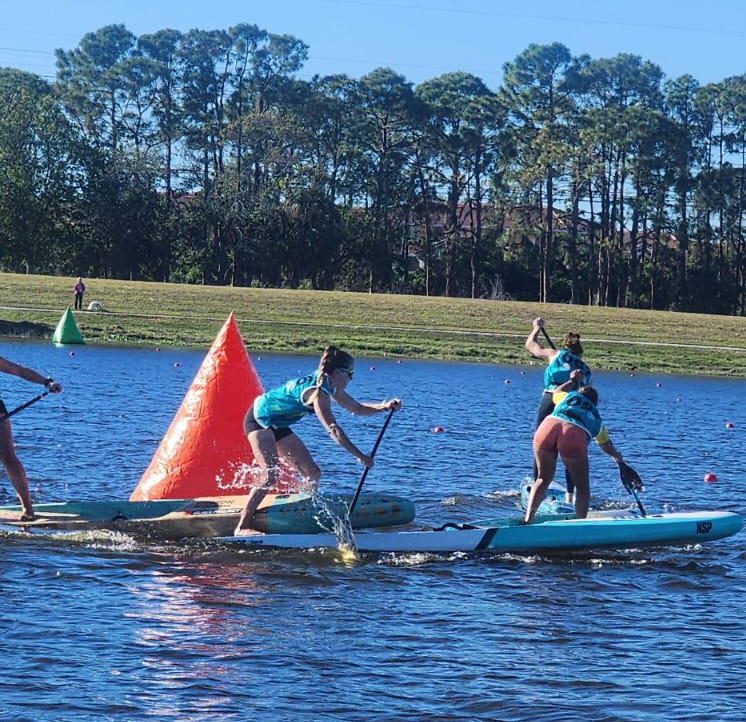
Who has the right of way at a turn buoy?
On Christmas day, the International Canoe Federation (ICF), soon to be known as “Paddle Worldwide”, released three rule changes for competitive SUP racing in 2025: two adjustments related to technical racing and buoy turns, and a new One Design mandate for paddle boards used in the junior class. The rule changes don’t come as a shock, but that doesn’t mean racers are satisfied. Top SUP athletes are already concerned about potential implications. In this three part series, SUP Racer is diving deep to consider how new rules are affecting the sport. Part II will cover whether the new technical racing rules really make things more fair, and Part III will discuss how long is “long distance” when it keeps getting shorter.
10.7.4 “When boats are overlapped at a turning buoy, the outside boat shall give the inside boat room. Boards are considered overlapped when one paddler has half of their board and over ahead of the other board’s nose. The paddler ahead has the right of way, even if they are on the outside.”
November 2024, ICF SUP World Championships. Eight paddlers raced toward buoy number 4 in the 1000 metre women’s final B technical race. The sun shone on a temperate Florida day in November. The biggest drama of the day was destined for the Final A, but not every paddler would escape Final B collision-free.
It’s the third to last buoy turn. On the previous turns, racers have been tightly clustered, but clean. Anais Guyomarc’h (FRA) turned first, she’s been leading the whole time. Immediately behind her is Sonia Caimari (ESP). Just like Anais, the nose of her board crosses the buoy, she steps back, and turns just as the next paddler reaches the buoy. Coming in third is Jenny Kalmbach (CRC). But as Jenny steps back to make her turn, the nose of Kyriaki Logotheti’s (GRE) board slides between her feet. Jenny wobbles. In a few minutes, a very similar situation will knock one of the fastest paddlers in the world off her board. Could Jenny stay upright?
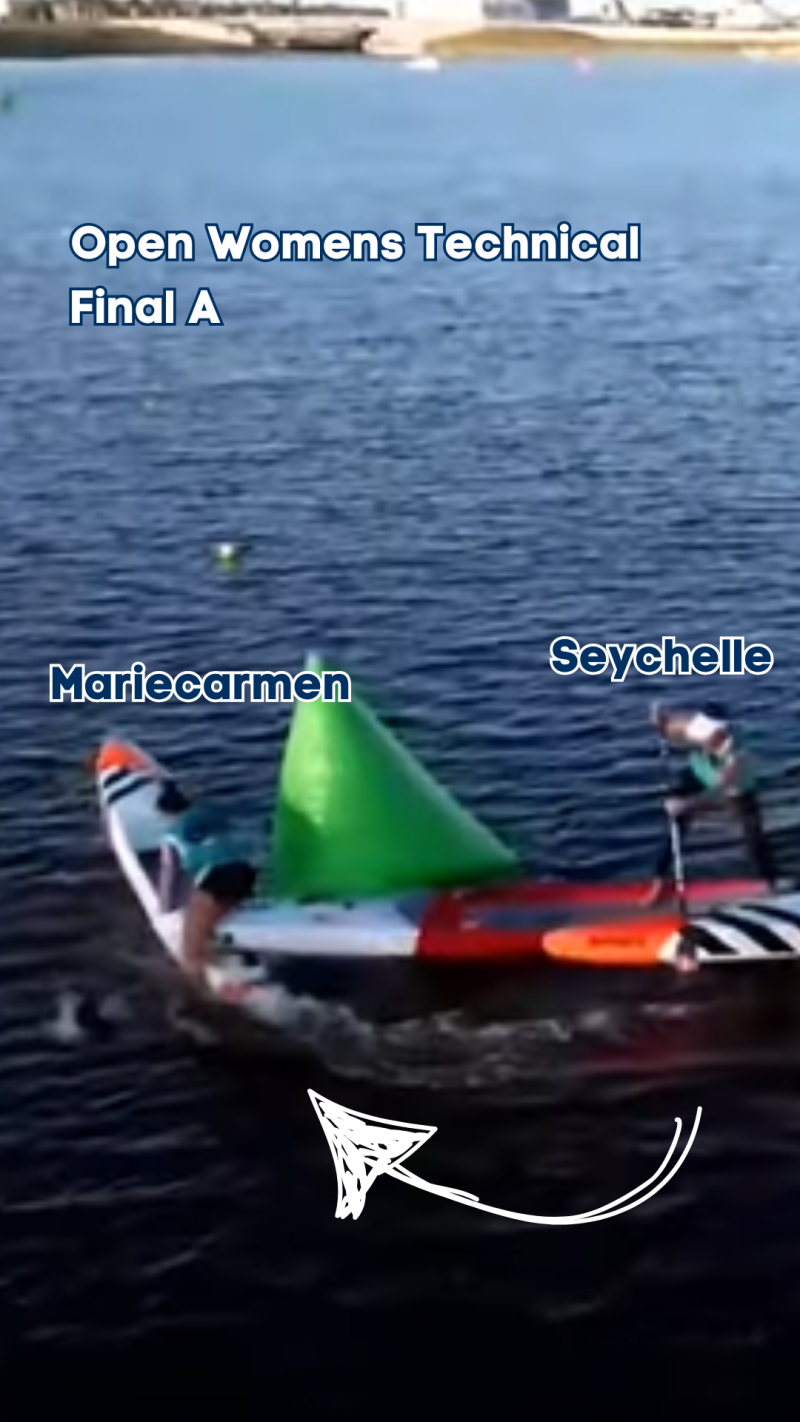
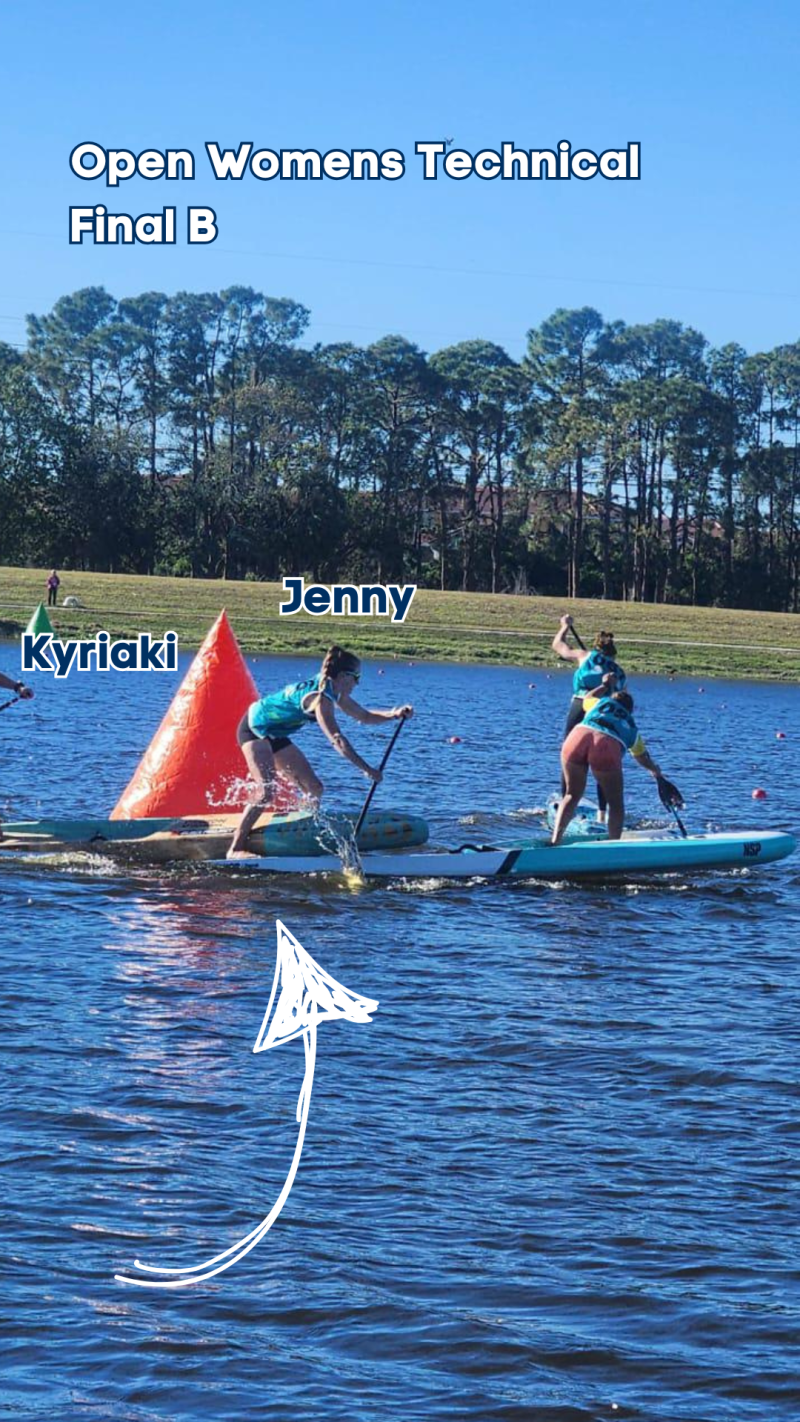
Somehow, Jenny stays standing and pushes on. Kyriaki finds a way through, even as behind her, Elena Etxeberria’s (ESP) board goes between her legs. Kyria steps her back foot over Elena’s board to re-centre herself, and pushes ahead of Jenny on the next buoy turn to finish third.
It was one of many heart-pounding moments of collision and tight racing during the technical events at November’s ICF World Championships in Sarasota, Florida. Although no disqualifications or penalties were issued during the Final B, the Final A race later in the day saw Mariecarmen Rivera (PUR) in the water and Seychelle Webster (USA) disqualified. What followed was a lot of spirited discussion about whether the DQ was correct, and how the rules should be applied.
The ICF’s new rules for 2025, which will be in effect at this year’s ICF hosted events, are meant to help resolve some of the debate when these types of collisions inevitably happen again. But will the new rules be enough? And do they really address the athletes’ concerns?
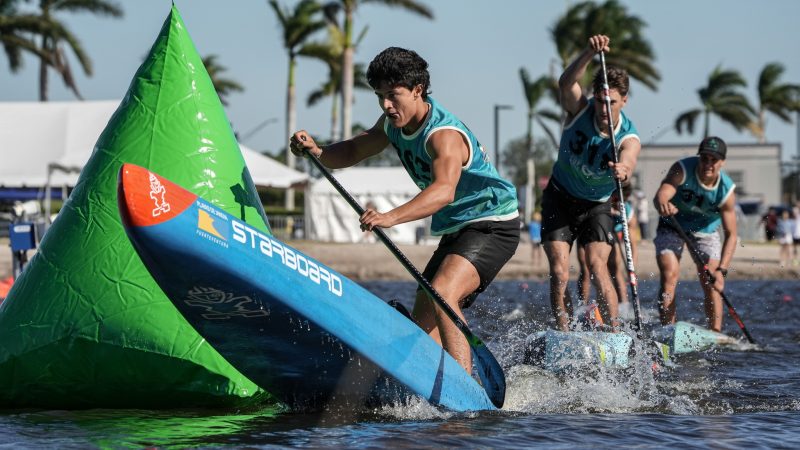
What does a good right of way rule look like?
The ICF’s new rule for right of way around buoy turns will almost certainly be better received than the highly controversial new One Design mandate for juniors. The language of the rule (10.7.4) follows the well-established right of way rule written into the International Surfing Association (ISA) rulebook:
xiii. Impeding Progress 1. A participant may not impede the progress of another participant while running, turning, or paddling 2. When approaching a buoy: 3. If two paddlers are “even” the paddler on the inside has right-of way. 4. Paddlers are considered even if neither paddler has more than half a board length lead. 5. If one paddler has half of their board ahead of the other paddlers nose, that paddler has the right of way, even if they are on the outside. 6. The penalty for impeding progress will be a 1-minute time penalty or disqualification in severe instances.
Looking across various ICF-governed paddlesports, SUP is only the second ICF governed flatwater racing sport to have right of way written into the rulebook. Buoy turns are integral to the 5km event in Canoe Sprint and both short/long courses in Marathon Canoe, but neither rule book includes a rule on right of way. The prevailing theme is that paddlers should avoid collisions where possible, and collisions that cause a disadvantage for another paddler can result in a penalty or disqualification for the paddler who caused the collision, broadly at the officials’ discretion. ICF Dragonboat, however, does have a clear right of way rule complete with an illustrated appendix:
10.5.3 – Turns in the 2000 meters pursuit race: 10.5.3.a – Boats arriving first to the turn (having the minimum advantage from another boat as following: the first pair of paddlers of the boat are on the same level as the bow of another boat or even don’t see the bow of another boat) have the right to enter the turn first, regardless of if they are on the right or left position (see Appendix 5);
Dragonboat may not seem like the most analogous paddlesport to SUP (nineteen teammates in the same boat with you versus zero), but something both paddlesports have in common is conflicting governance. Like the ICF competes with the ISA in governing SUP, the ICF competes with a different governing body in overseeing dragonboat: the International Dragon Boat Federation (IDBF). The IDBF, like the ISA, has clear rules on right of way at buoy turns in their rule book. Perhaps it’s this pressure from competing governing bodies that has pushed the ICF to add right of way rules for dragonboat and now SUP.

Too much gray area?
The third and final rule change for SUP in 2025 is the least controversial, though arguably leaves room for improvement:
10.8.3 – Any athlete who is considered by a Course Umpire(s) or Race Director to have been responsible for a collision, or who damages the board or paddle of another athlete or unnecessarily deviates from the direct racing line or deliberately blocks or impedes the path of other athlete(s) may be penalised or disqualified and the athlete who suffered the incident might advance to the next phase of the event decided by the Race Director.
Previously, an athlete who suffered an incident might have seen their competitor disqualified, but could still miss out on advancing to the next stage because of the incident. Allowing those affected athletes to advance is a clear win, assuming the rule is applied fairly at the discretion of the Race Director. It doesn’t address every situation though, and leaves a sizable gray area. Race Directors must apply their best judgment. And what happens if a DQ occurs during a final, like it did for the open women’s technical Final A? In Jenny’s words: “the damage is done.”
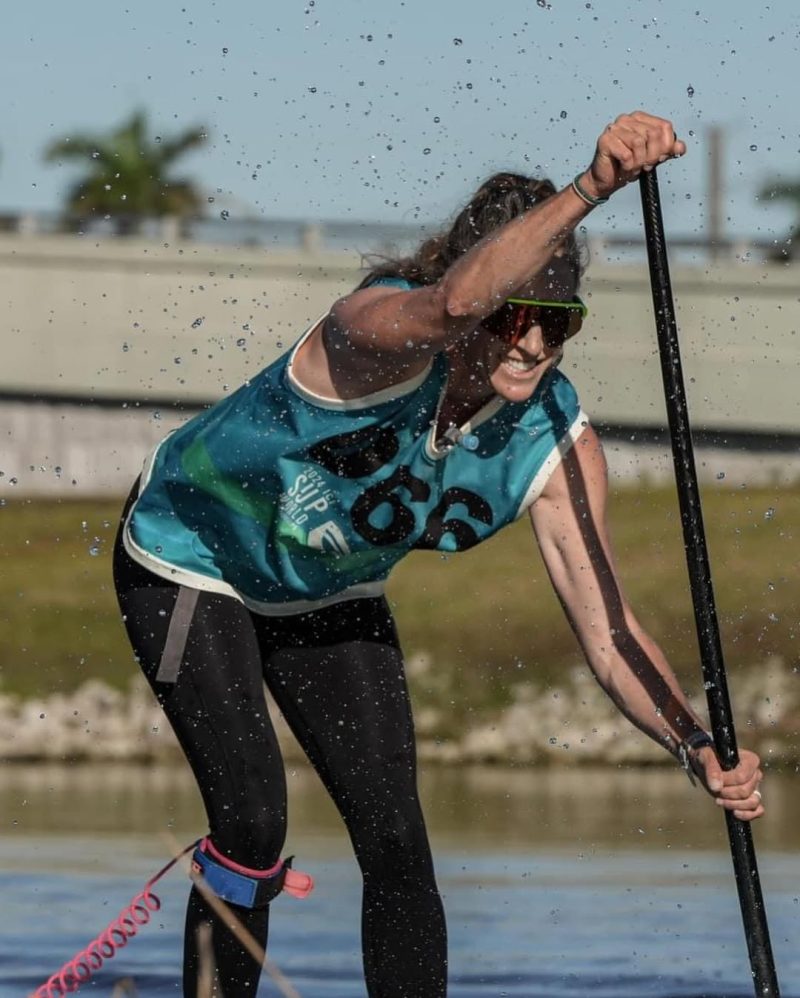
Even the new written rule on right-of-way leaves room for interpretation. For Jenny Kalmbach, even though she stayed upright with a competitor’s board between her feet, she still lost time. The new rule may provide clarity, but she’s concerned that the process for determining a penalty or disqualification is still flawed. Jenny says: “The problem I see with what happened in my race is that who makes the call? The ref at the buoy clearly saw it and alerted the head judges but they would have only made a call if I paid the $75 fee – which I wasn’t willing to do. If a ref sees it then it should automatically be addressed, it shouldn’t have to be paid for by the athlete!” The protest fee is fairly standard(1), but the judge’s choice to ignore ref input reveals just how much about rule implementation is left up to officials’ discretion. Because there was no clear right of way in the rulebook during November’s race, Jenny wasn’t sure how the officials would rule on a protest. Now that there’s a clearer rule, she feels more confident that the fee would have been reimbursed.
In the end, after her Final B, Jenny acknowledged that the competitor in question was a junior and she spoke with their team directly. It was Jenny’s skill and experience (and maybe a bit of luck) that kept her upright when that board slid on top of hers. The most important rule for her is “the unwritten rule of racing – don’t be a jerk”.
How should athletes proceed?
For longtime SUP racing legend and maven of buoy turns, Annabel Anderson, the best thing for paddlers to do is just work on their skills and strategy:
To finish first, first you must finish, and as the name suggests technical race requires technical skills.
Annabel offers a mini masterclass of advice:
“Regardless of where you start on the start line, you need to anticipate your plan of how and where you will turn around the first buoy. This is where skills and smarts become critical to being good at technical racing. If you find yourself coming into the buoy first or second, or in a bunch, you have to evaluate who is around you and where you want to position yourself.
You also need to have an awareness of the level of skill of execution of those people around you when you are first to the buoy or on the inside coming into the turn to prevent them putting their nose through someone’s legs. Continuing to paddle could be considered unsportsmanlike…
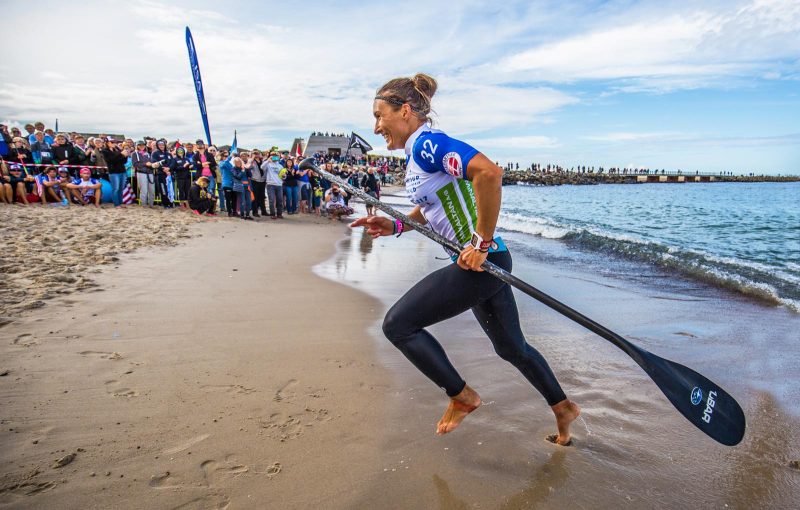
As an athlete, when I started I had no idea about buoy turns and quite frankly my first Battle of the Paddle, I sucked. But I persevered, I went away and I worked out how to execute buoy turns and how to be faster going in, getting around and getting out of the turn to ensure I was less affected by situations like this. Eventually I became the fastest female at buoy turns and would gain time on every corner.
Another thing I did was to spend a lot of time in very close combat situations in my off-season, so that whenever situations like this happened, it was a situation I was well familiar with.
I highly suggest that the only way you get better at technical racing is with practice so that when the biggest days come you’ve been in that situation a thousand times and know exactly how to deal with it…
And if you want a master class in how to turn…look at footage from the BOPs, PPGs and professional surf lifesaving in Australia.”
Named “Paddler of the Decade” by SUP Racer in 2019, it’s not surprising to hear that Annabel’s perspective is all about the sport. Competing in elite sport means testing yourself, facing challenges both expected and unexpected, and knowing that you’ve pushed yourself to your absolute limits within the ‘controllables’. The ‘uncontrollables’? Sometimes you have to let those go. In Annabel’s words: “Is it fair for the person who ended up in the water to have their day ruined? No! But that is racing and that is sport.”
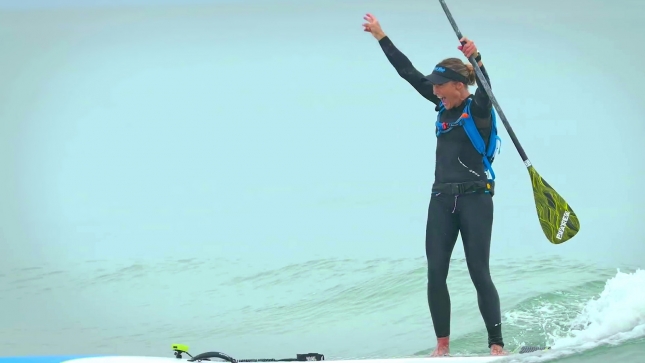
(1) The $75 fee Jenny’s referring to here is an aspect of the rulebook that hasn’t changed. In order to protest a penalty (or lack of penalty), athletes must pay a protest fee (11.2.3). It does get refunded if the protest is upheld. Strict rules and fees around protests are fairly standard across sports, which you may recall from reading about the controversy over Jordan Chiles’ floor exercise medal at the Paris Olympics.



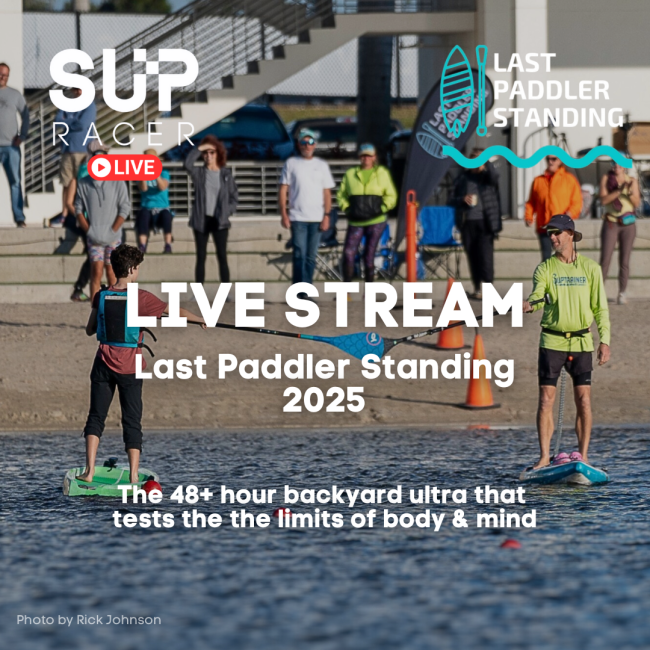
You must be logged in to post a comment.